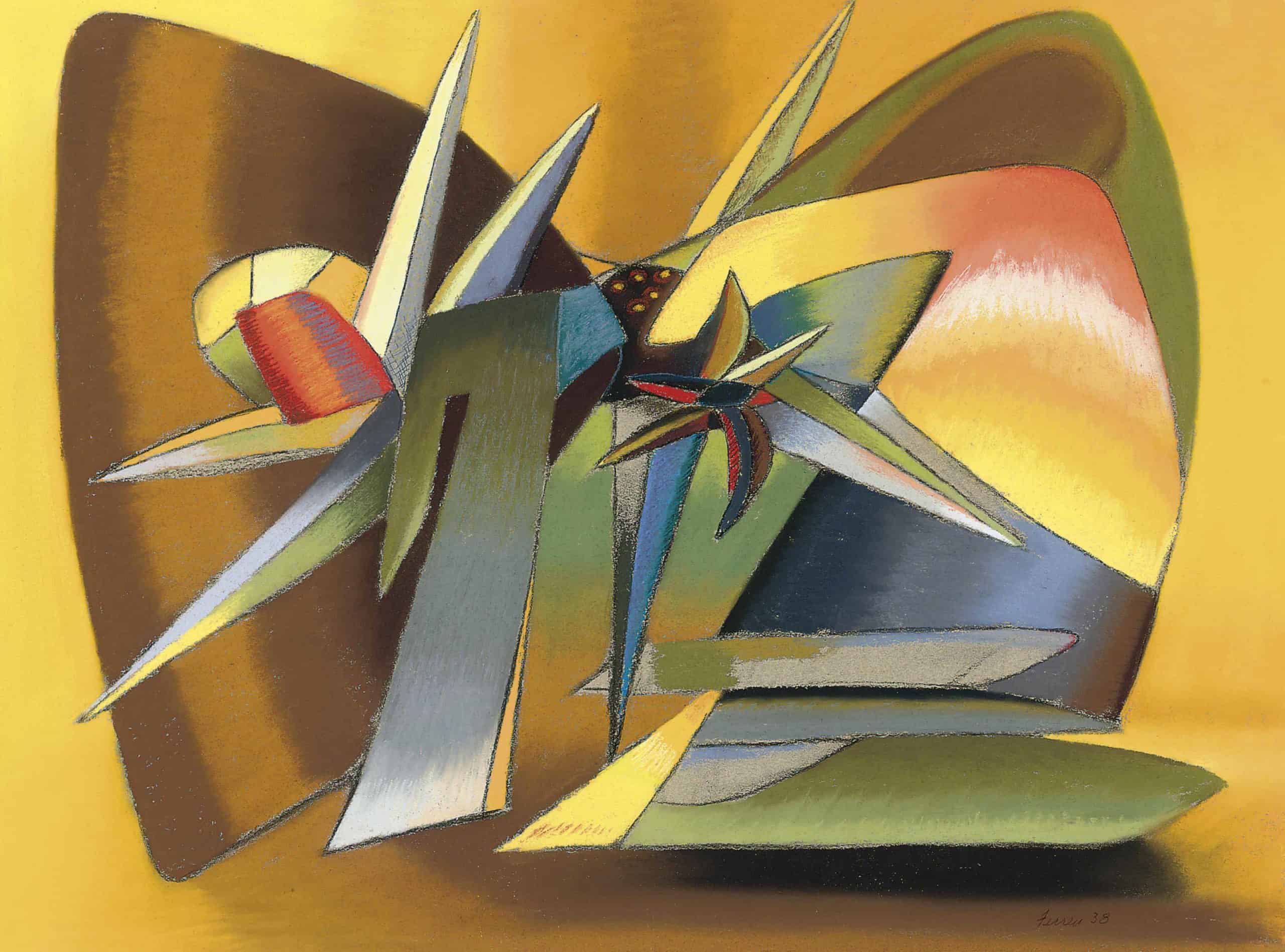
John Ferren
We Buy And Sell John Ferren Paintings And Sculptures
Click To Get A Valuation Of Your John Ferren Painting. You’ll get a confidential fair market valuation of your painting and its marketability. We pay cash for paintings by John Ferren and take consignments to the gallery. You’ll also find John Ferren artwork for sale in the gallery.

John Ferren Painting (1938)
Title: The Desert
18 1/4 x 24 3/8 inches
John Ferren Biography
John Ferren (1905 – 1970)
The esteemed abstract artist John Ferren was a major player in the pre-war Paris art scene. He was a pivotal contributor to what would become abstract expressionism. Little is known of Ferren outside of art circles, yet he was a crucial contributor to the evolution of art in the 20th century.
Born in Oregon on October 17th 1905, John Ferren spent his childhood moving around the Northwest. He also lived in Los Angeles and San Francisco for a time. After graduating from the Polytechnic High School in Los Angeles in 1923, he returned to San Francisco to study at the California School of Fine Arts. John Ferren apprenticed under an Italian stonecutter from whom he learned modeling and the beginnings of sculpture. It was here he started to experiment with clay and plasticine, rejecting the formality of old ideas and striving to push new boundaries.
By 1929, John Ferren had become tired of the art scene in America and saved up enough to travel to Italy and France. On the way he made an important stop off in New York for a visit to the Gallatin Collection. This trip is where he encountered the works of Henri Matisse and Hans Hofmann which made a huge impact on him.
He settled for a while in Paris, studying art at some of the most important and influential schools in France, the Academie Ranson and the Sorbonne. This was a sideshow to what he regarded as his true artistic education, his interactions and friendships with the artists also drawn to Paris at the time. These artists included Pablo Picasso, Piet Mondrian, Joan Miro and Alberto Giacometti. These were the biggest names in expressionism and abstraction at the time and perhaps in history. It was his marriage to the daughter of Manuel Ortiz de Zarate, the Spanish artist of some note, that gained him access to these influential circles.
The fertile artistic ground of Paris fed John Ferren’s mind and inspired him to push boundaries in the ways the artists he met there. He came back to the United States in 1930 but soon returned to Paris, unable to resist the city. He remained in Paris eight years until the looming Second World War forced him and many others from Europe (though Picasso lived through the war in Paris).
Paris was a hotbed of creation pre-war and Ferren dove right in. He associated with the Abstraction-Creation group who opposed the rise of Surrealism and figurative studies, which were making waves at the time. It was the son of Henri Matisse, Pierre, who noticed Ferren and gave him his first solo art show, which took place in New York in 1936. Artist John Ferren associated closely with Surrealists but also wrote manifestos against the movement. It appears he didn’t have much of a strong alliance with any movement, preferring to cast light on the failings and advantages of all forms of art.
With war looming and newly divorced, John Ferren returned to the States in 1938. There in New York City he continued his exploration of new ideas and concepts. John Ferren’s art became popular throughout the United States during this time. Partly through Pierre Matisse’s love of his innovative work with plaster etchings. The etchings being a 19th century technique which he had rediscovered and used to astounding effect.
John Ferren’s artwork in plaster were some of the first American artwork acquired by Solomon Guggenheim, of the famous Guggenheim Museums. Experimenting with Zen and Tao disciplines through his friendship with Yun Gee, the avant garde experimental artist, John Ferren found he had a new impetus to capture movement, clarity and the nature of things through his art compositions. These were mostly abstract, though he continued with figurative painting during this period and his lifetime.
As John Ferren’s artistic career developed, he found new ways of combining all the influences from his travels and other artists. His travels took him to the Middle East, Lebanon, where he was moved by the Islamic art he encountered. It was the sense of geometry so integral to that art form that he injected into his work. At once spontaneous and constructive, his later works capture an expressionistic attitude combined with his strong sense of form. This created a unique oeuvre that continues to inspire and confound expectations today.
Ferren also worked in film, collaborating with Alfred Hitchcock on Vertigo and The Trouble with Harry. For a while, John Ferren was also president of the abstract expressionist “Club”. While never attaining the recognition in his lifetime of the great artists of the period, John Ferren is still much more than a footnote in abstract expressionism. He was truly at the forefront of the movement for quite some time.
Still exhibited around the world, John Ferren’s paintings and artwork are unlikely to fade from view. His paintings and sculpture have a timeless quality that will continue to inspire creativity and enjoyment for generations.
John Ferren died on July 24th 1970 in New York, having been an active member of the art scene right up until his demise.